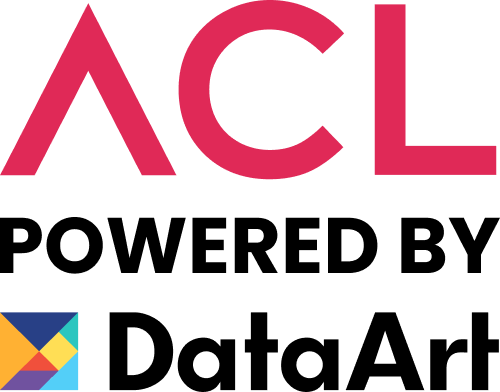Looking to supercharge your software development capabilities? Software team augmentation might be your ticket to success. In fact, companies using team augmentation see a 30% increase in project efficiency, according to a 2023 report by Deloitte. By strategically expanding your team with skilled professionals, you can address gaps, accelerate project timelines, and bring in fresh perspectives. In this article, we’ll cover the essentials of successful staff augmentation. We’ll dive into the best practices for assessing your current team needs, finding the right augmentation partner, and integrating these new members seamlessly. Whether you're looking to fill temporary skill gaps or scale for larger projects, this guide will help you navigate the process effectively. Keep reading to discover how to make software team augmentation work for you!
What Is Software Team Augmentation?
Software team augmentation is a strategic approach to temporarily expand your development team by adding skilled professionals to it as contractors instead of full-time salaried employees. Unlike traditional hiring or the more hand-off style of IT outsourcing, this method allows you to bring in expertise specifically tailored to your current project needs without the long-term commitment of full-time employment.
All in all, software team augmentation involves partnering with external firms or agencies to hire remote developers, software engineers, or other IT specialists who seamlessly integrate with your existing team. This model is particularly effective for addressing short-term skill gaps, accelerating project timelines, hiring cost-efficient resources, or managing fluctuating workloads.
In practice, software team augmentation can offer significant benefits. For example, 69% of companies utilizing team augmentation report faster project completion times, according to a 2022 survey by TechRepublic. This efficiency boost comes from the ability to quickly onboard experienced professionals who hit the ground running. This goes hand in hand with another key advantage of team augmentation: staff flexibility. You can scale your team up or down based on project requirements, without the overhead of hiring permanent staff. This approach also provides access to specialized skills that may not be available internally, helping you tackle complex challenges with ease.
Moreover, team augmentation fosters better alignment with your company’s culture and processes compared to traditional outsourcing. The augmented team works closely with your in-house staff, ensuring that communication remains smooth and integration is seamless. This proximity helps you maintain maximum productivity and ensures that external experts are fully integrated into your workflows.
Assessing Your Current Team Needs
Before diving into software team augmentation, it’s always best to thoroughly conduct a preliminary assessment of your current team’s needs. This step ensures that you bring in the right external expertise and optimize your team’s performance effectively.
Start by evaluating your team’s strengths and weaknesses. Conduct a skills assessment to identify where your internal team excels and where there are gaps. For instance, a 2023 report from McKinsey found that 60% of organizations struggle with skill shortages in critical areas like data science and cybersecurity. Understanding these gaps helps in targeting the precise skills you need from augmented team members.
Next, consider your project requirements. Define the specific technical skills and experience required to meet your project goals. Are you looking for expertise in a particular technology or language? According to a 2024 survey by Gartner, 72% of companies that precisely matched augmentation skills with project needs experienced higher project success rates. This alignment ensures that the added team members can contribute effectively from day one.
Setting clear goals for your augmentation is also vital. Determine what you want to achieve with the augmented team, such as faster development cycles, improved quality, or meeting tight deadlines. Establishing these goals helps in evaluating the effectiveness of the augmentation process and making necessary adjustments.
Lastly, decide whether full-time and part-time software team augmentation will be best for the company, based on your needs. Full-time augmentation is ideal for long-term projects or when significant resources are required, while part-time augmentation can be effective for shorter, specific tasks. Data from a 2022 Deloitte study indicates that 45% of businesses opt for part-time augmentation for projects with defined, short-term objectives. On the other hand, companies that are looking for more holistic support choose to hire remote team members for the long term, ensuring a seamless cultural fit.
What to Look for in a Dedicated Software Development Augmentation Team
Choosing the right dedicated software development augmentation team is critical for ensuring project success. Here’s what to focus on when evaluating potential partners:
1. Technical Expertise:
Assess the team’s technical skills and experience. Ensure they have expertise in the specific technologies and platforms relevant to your project. According to a 2024 survey by Stack Overflow, 68% of businesses prioritize technical proficiency when selecting development partners. This ensures the team can handle complex tasks effectively and contribute to the project’s success.
2. Proven Track Record:
Look for a team with a strong track record of delivering successful projects. Review case studies and client testimonials to gauge their reliability and performance. A 2023 report by Clutch found that 76% of companies consider past performance and client feedback as the most critical factors in choosing a development partner.
3. Cultural Fit:
Ensure the team aligns with your company’s culture and values. This compatibility can significantly impact collaboration and communication. A survey by Deloitte in 2023 revealed that 62% of organizations experience smoother integrations and better outcomes when their augmentation partners fit well with their company culture.
4. Communication Skills:
Effective communication is essential for seamless integration and project management. Evaluate the team’s ability to communicate clearly and regularly. According to a 2024 report by the Project Management Institute, poor communication is a leading cause of project failure, cited by 50% of organizations. Ensure that the team provides regular updates and is responsive to feedback.
5. Flexibility and Scalability:
Choose a team that can adapt to changing project requirements and scale resources as needed. Flexibility is crucial for managing evolving project demands. The 2022 Agile Alliance report found that 70% of successful projects were managed by teams that demonstrated high levels of adaptability and scalability.
6. Security Practices:
Verify that the team follows robust security protocols to protect your data and intellectual property. A 2023 study by Cybersecurity Ventures highlighted that 60% of data breaches are linked to inadequate security practices among third-party partners. This is why it’s best to ensure the team has established security measures and compliance with relevant standards.
Evaluating Potential Staff Augmentation Partners: Key Criteria
When evaluating potential partners for software development augmentation, it’s best to determine specific criteria to ensure you choose the right fit for your needs. Here’s what to consider:
Experience and Expertise:
Review every potential partner’s experience in your industry, as well as their expertise in hiring developers for similar projects as yours. A 2024 report by Forrester found that 72% of companies believe industry-specific experience is crucial for project success. Look for partners who have a proven track record with technologies and methodologies relevant to your unique requirements
Reputation and References:
Check references and client feedback to gauge the potential partner’s reliability and performance. According to a 2023 survey by GoodFirms, 80% of businesses rely on client testimonials and case studies to assess a partner’s credibility. Reach out to former clients to verify their satisfaction and learn about their experiences.
Technical Skills and Certifications:
Ensure the partner’s team possesses the necessary technical skills and certifications to recruit highly technical individuals. The 2023 Global Skills Index by Coursera highlights that 65% of organizations prioritize certifications when evaluating technical expertise. Certifications from recognized institutions indicate a team’s commitment to industry standards and best practices.
Project Management Approach:
Evaluate the partner’s project management approach, as this will determine how well they hire your new augmented development team. According to a 2024 study by PMI, 65% of projects fail due to poor project management practices. Both your internal recruitment team and any staff augmentation agency you partner with should look for developers who use established frameworks like Agile or Scrum and have a transparent process for managing timelines and deliverables.
Cost and Value:
Assess the staff augmentation partner’s pricing structure and value proposition. This will help you ensure that their rates align with your budget while providing value for money. A 2023 report by Deloitte shows that 58% of businesses consider cost and value as primary factors when selecting development partners.
Communication and Collaboration:
Evaluate how all potential partners handle communication and collaboration throughout the recruitment process. The 2024 Project Management Institute report states that 47% of project failures are attributed to ineffective communication. Choosing a partner who offers clear, consistent rapport and collaborates effectively with your internal team will make software team augmention much easier.
Scalability and Flexibility:
Ensure the software team augmentation partner of your choice can scale resources and adapt to changing project requirements. The 2023 Agile Alliance survey found that 70% of successful projects involve partners who demonstrate flexibility in resource allocation and project scope adjustments.
Our Top Tips For A Successful Software Team Augmentation
Define Clear Objectives:
Start by setting precise goals for your augmented team, as clear objectives help align the team’s efforts with your project needs. A 2023 survey by PMI found that projects with well-defined goals are 45% more likely to succeed. Outline what you want to achieve and communicate these goals clearly to all team members involved in the staff augmentation process.
Ensure Seamless Integration:
Smooth integration of augmented team members with your existing staff is a non-negotiable if you’re aiming for long-term success. That’s why it’s best to redefine your onboarding processes and provide access to necessary tools and documentation. According to a 2024 report by McKinsey, projects with effective onboarding are 30% more likely to meet deadlines and stay within budget. Ensure that new members are familiar with your workflows and company culture before they dive into work!
Foster Effective Communication:
Establish robust communication channels between your internal team and the augmented members. Regular check-ins and updates help maintain alignment and address issues promptly. The 2023 Project Management Institute report indicates that 60% of project failures are due to poor communication - so leverage tools like Slack or Microsoft Teams to facilitate ongoing dialogue.
Monitor Performance Closely:
Implement regular performance reviews to track the progress of your augmented development team. Set key performance metrics and review these regularly to ensure the team meets your expectations. A 2022 study by Deloitte revealed that 64% of high-performing teams use regular performance monitoring to drive success.
Provide Feedback and Support:
Offer constructive feedback and support to help the augmented team adapt and excel. Regular feedback sessions can help address any challenges early on. According to a 2024 Gallup report, 70% of employees who receive regular feedback are more engaged and productive, and you definitely want to achieve this kind of dynamic when diving into software team augmentation. Otherwise, you might end up feeling like you’re just working with a stranded external provider instead of a team that acts as an extension of your IT department.
Adapt to Changes Quickly:
If you’re just starting your software team augmentation journey, be prepared to adjust the scope or resources based on project needs. Flexibility is key to managing evolving requirements and ensuring project success. A 2023 Agile Alliance study found that 68% of successful projects involved teams that could quickly adapt to changing conditions.
Maintain a Collaborative Culture:
Encourage collaboration between augmented team members and your internal staff to generate a high-performance dynamic. A collaborative environment fosters innovation and problem-solving. The 2024 Harvard Business Review report highlights that teams with a strong collaborative culture are 35% more effective at meeting project goals.
Leverage Collaborative Tools:
Implement project management and collaboration tools to streamline workflow and keep everyone on the same page. Tools like Asana, Trello, or JIRA can help manage tasks, track progress, and facilitate communication. According to a 2023 report by TechRepublic, teams using these collaborative platforms see a 30% increase in productivity and efficiency.
Ready To Get Started With Software Team Augmentation?
As we’ve explained throughout this article, successfully managing software team augmentation involves careful planning, clear communication, and ongoing evaluation. By setting precise goals, fostering collaboration, and monitoring performance, you can ensure that augmented teams contribute effectively to your project’s success.
For businesses looking to streamline their team augmentation processes, ACL offers specialized services to support your needs. With a proven track record of enhancing team integration and project outcomes, we can help you leverage external expertise while maintaining alignment with your strategic goals. According to a 2024 study by TechRepublic, 65% of companies partnering with expert staff augmentation services like ours report improved project efficiency and quicker time-to-market. Ready to hire nearshore developers? Contact us today to learn how our IT outsourcing solutions can optimize your software team augmentation and drive your projects forward.






